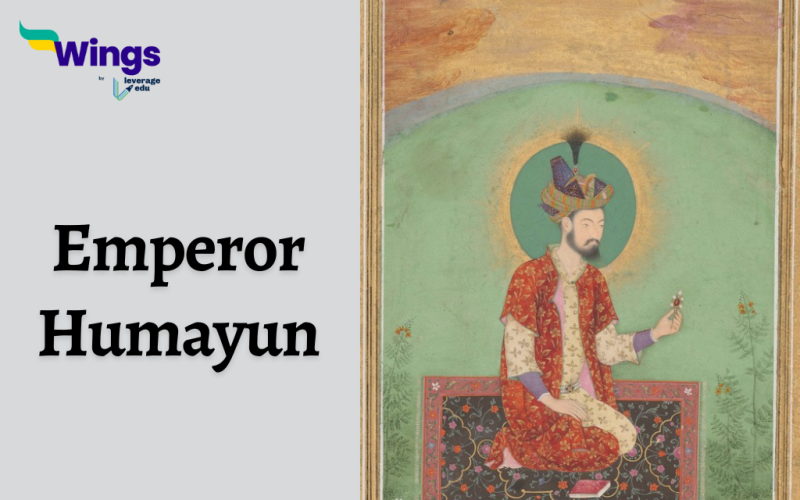The history of the Mughal Empire is a rich legacy woven with the stories of its emperors, each leaving an indelible mark on the Indian subcontinent. Among these notable rulers stands Mirza Nasir-ud-Din Muhammad, better known by his regnal name, Humayun. Born on March 6, 1508, Humayun’s reign, though fraught with challenges and uncertainties, played a pivotal role in shaping the Mughal dynasty.
Table of Contents
The Second Mughal Emperor’s Early Life and Ascension (1508-1530)
The story of Humayun begins with his birth to Babur, the founder of the Mughal Empire, and his favourite wife, Māham Begum. Unlike his father, who was a seasoned warrior and conqueror, Humāyūn ascended to the throne at the young age of 22, an inexperienced ruler facing a realm that stretched across Eastern Afghanistan, Bangladesh, Northern India, and Pakistan.

Humayun’s Struggle for Supremacy Against His Brothers (1530-1540)
Humāyūn’s reign was marked by intense sibling rivalry, especially with his half-brother Kamran Mirza, who controlled the northernmost territories of their father’s empire. Their rivalry escalated, leading to Humāyūn’s loss of Mughal territories to Sher Shah Suri. However, a glimmer of hope emerged when Humāyūn secured Persian assistance, marking a significant shift in Mughal court culture influenced by Persian art, architecture, and literature.
Must Read: Life & Accomplishments of Aurangzeb: The Least Favorite Mughal
Humayun’s Return to Power (1540-1555)
Humāyūn’s exile was a turning point in his life and reign. He lost his empire but gained valuable insights during his time in Persia. He amassed Persian support and an army to regain his lost territories. The return to India was marked by both triumph and challenges, and it signified the expansion of the Mughal Empire in a relatively short time, leaving behind a legacy for his son, Akbar.

Humayun’s Alliances and Relations
Humāyūn’s diplomatic skills played a crucial role in securing alliances, including his marriage to the daughter of Jamal Khan, a strategic move to placate the Khanzadas. These relationships helped stabilize his rule and navigate the complex political landscape of his time.
Must Read: Mughal Emperor Jahangir: Life, Legacy, and Influence
Humayun’s Contribution
Humāyūn’s reign saw the flourishing of Persian art, architecture, language, and literature in the Indian subcontinent. The influence of Persian culture left an enduring imprint, with numerous stone carvings and Persian manuscripts dating back to his era.
Humāyūn’s legacy endures through his tomb, a masterpiece of Mughal architecture located in Delhi, India. This grand garden tomb, commissioned by his chief wife, Bega Begum, served as a precursor to iconic monuments like the Taj Mahal and exemplified the fusion of Persian and Indian architectural styles.

Assessing Humayun’s Reign and Historical Significance
In conclusion, Humāyūn’s reign was a critical juncture in Mughal history. His resilience, diplomatic acumen, and cultural contributions left an indomitable mark on the Indian subcontinent. While he faced adversity and challenges, Humāyūn’s reign laid the foundation for the glorious era of his son Akbar and the enduring legacy of the Mughal Empire. His story is a testament to the enduring spirit of a ruler who strived to navigate the complexities of his time and left a lasting imprint on history.
FAQs
He defeated the Afghans in 1555 and restored the throne to the Mughals. However, he died six months later after falling down the stairs of his library in 1556.
Humayun was known for his kindness and generosity, but he was a poor general and a poor swordsman. He was also fond of painting and wrote Persian poetry.
Jalaluddin Muhammad Akbar was Babur’s grandson and Humayun’s son. In 1555, Humayun was driven from his capital city of Delhi by an invader from Afghanistan, named Sher Sha Sur. With the help of troops from the Shah of Iran, Humayun made his way back to Delhi ten years after the death of Sher Sha Sur.
Humayun escaped to Sindh after being defeated by Sher Shah. He went to his brother Askari to raise another army against Sher Shah, but when he heard that Askari was going to arrest him, he dropped the plan.
Relevant Blogs
| Maratha Empire (1674-1818) | Shah Jahan |
| The Vijaynagar Empire (1336-1647) AD | Pallava Dynasty |
| Khilji Dynasty (1290–1320) | Lodi Dynasty |
| Morley-Minto Reforms | Chola Dynasty |
| Bengal Partition | Chalukya Dynasty |
This was all about Humayun. For more content related to the different states of India, visit our articles like this, you can get Study notes on the Modern History of India here. Also, you can visit our general knowledge page on Indian History!
 One app for all your study abroad needs
One app for all your study abroad needs













